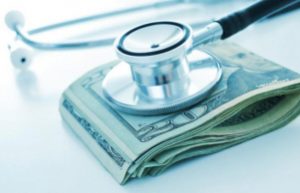| Editor’s Note: BHM watches the national health spending trends and understands the importance the impact these trends have on your organization. Click HERE to learn more about how BHM helps your organization lower expenses. |
National health spending in the year ending November 2017 was nearly $3.56 trillion, up 4.5 percent from the same period one year prior, according to an Altarum report.
Though gross domestic product dropped nearly 6 percent mid-2009, it is now 12.1 percent higher than it was at the start of the recession in December 2007. Further, since the start of the recession, health spending through November 2017 increased by 29.9 percent. National health spending continues to stay around 18 percent of the national GDP, nearly 3 percent higher than it was pre-recession.
Growth over the past 12 months: Spending on physician and clinical services grew most rapidly among the major categories, at 5.2%. Expenditures for hospital care grew the slowest. at 2.9%.
Here is a breakdown of health spending by category from November 2016 to November 2017.
- Hospital spending represented 32 percent of all health spending ($1.14 trillion)
- Physician and clinical services represented 20 percent of all health spending ($714 billion)
- Prescription drugs represented 10 percent of all health spending ($351 billion)
- Nursing home care and home healthcare represented 8 percent of all health spending ($271 billion)
- The remaining 30 percent of healthcare spending was devoted to dental services and other personal healthcare needs.
Click HERE to view the full report.
Independent review services improve workflow and lower staffing expenses. For our white paper on the leveraging the value of Peer Reviews for organizational improvements:[email-download download_id=”71220″ contact_form_id=”71222″]
BHM watches national health spending trends and understands the importance the impact these trends have on your organization. Click HERE to learn more about how BHM helps your organization lower expenses.
